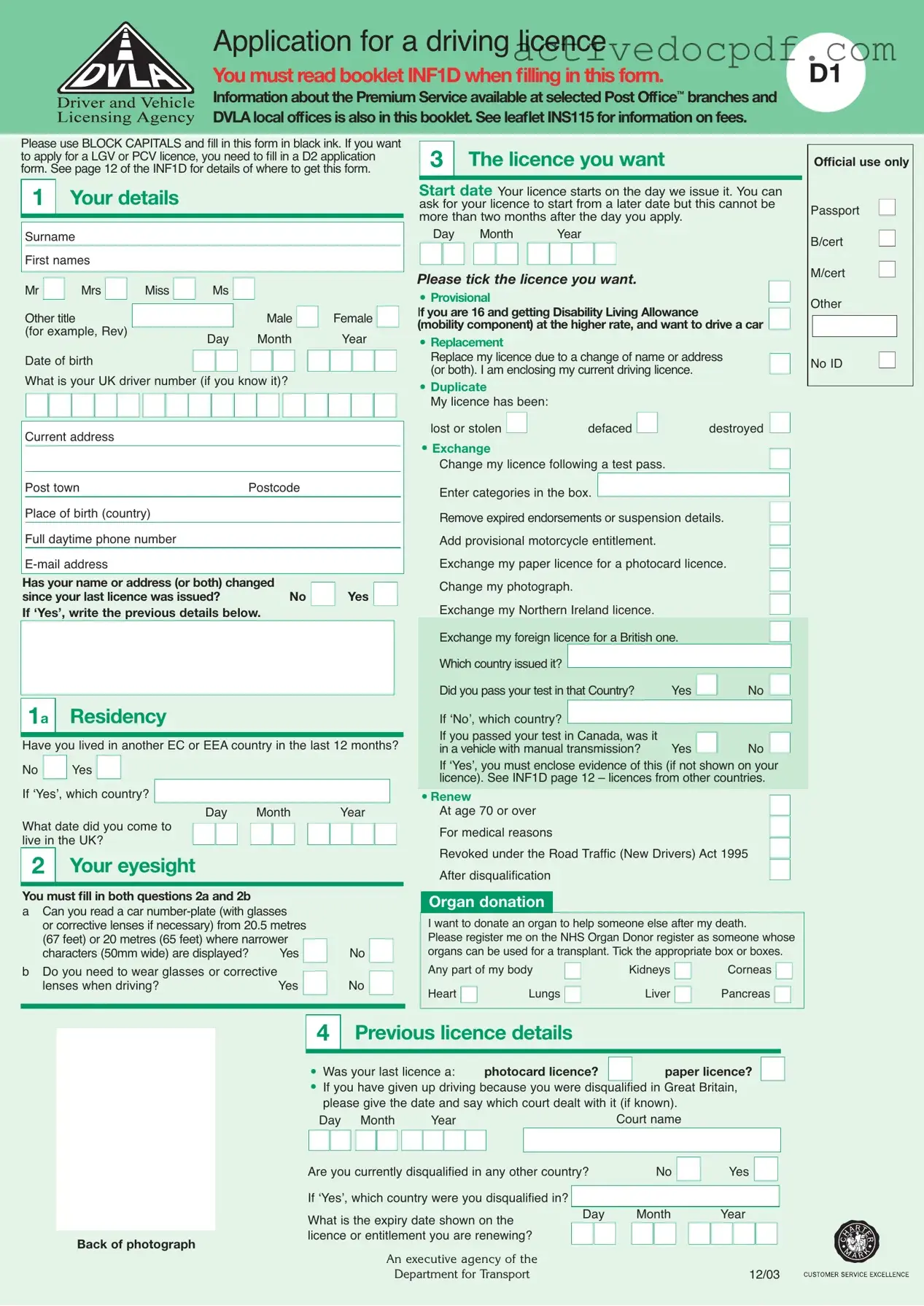Free D1 Dvla PDF Form
The D1 DVLA form is an essential document used to apply for a driving licence in the United Kingdom. This form serves as the initial step for individuals seeking to obtain, renew, or update their driving credentials. It is crucial to follow the instructions carefully and refer to the accompanying booklet, INF1D, to ensure a smooth application process.
Edit Form Online
